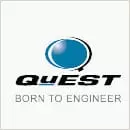There are several challenges faced by the ESO companies while attempting innovation.
Challenge: Intellectual Property – Most of the work done by ESO’s is done directly for their customers on their products. Thus by default, they do not own the product. Any innovation that emerges as a result of the work carried out belongs to the customer. Thus ESO’s working for multiple customers (who are competitors themselves) have to be extremely careful not to violate the IP.
Solution: The way forward in dealing with this challenge is to have joint ownership of product development and patents. In cases where joint ownership is not possible, employees of ESOs who majorly contributed towards the patentable work, need to be recognized and included as joint holders of the patent. This gives a good indicator of the capability of the organization to innovate and also gives recognition to the individuals who have participated in the process.
Challenge: Capability – Innovation requires a fair bit of product and domain knowledge. As ESO’s do not work on concept development phase of the product development lifecycle, their ability to innovate is limited. It also needs creative thinking and experimenting skills which the staff of ESO’s do not normally invest in (most of their time is spent in delivering the daily work).
Solution: Developing product knowledge is not easy especially in ESO where the supplier is not close to the product development. Quest has taken the route of “Local-Global” model in which there are teams comprising of very experienced engineers operating “Local”ly who form the guiding force for the rest of the team working across “Global” locations. In this model, it is a win-win situation for the customer as well as Quest because the customer gets someone who understands their needs and Quest gets to play a bigger role and add value to the customer. Quest has also started training small teams in creativity.
Challenge: Funding – Innovation requires funding to convert the idea into reality. Usually, ESO’s are limited by their funding because there is no clarity on the return on investment in most cases (limited by item (a) above).
Solution: The solution to this lies in the ESO making strategic investments in areas where they believe the customer would have a need in the future. Quest works very closely with its strategic customers to identify such needs (through technology road mapping) and makes small investments to grow a capability or develop a new offering, which could be innovative.
So what kind of innovation helps the ESOs to move up the value chain? Watch out for our next post on this topic.
